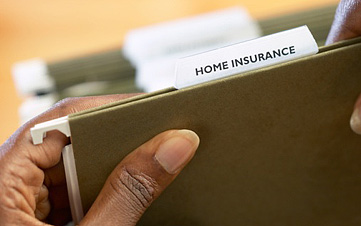When You Can't Afford Your Insurance Deductible
Many homeowners are discovering that the deductible on their homeowners policy is a percentage of their house's value -- not a flat $500 or $1,000. Here's how to come up with the cash.


Hurricane Ike dropped two trees onto our house in Kingwood, Tex., a northern suburb of Houston. Unfortunately we had not heeded your advice to start an emergency fund and currently have no liquid funds. While we are confident our insurance policy will cover the damages, we aren't sure how we will come up with the cost of the deductible. I am seriously considering withdrawing money from my Roth IRA to cover the reconstruction expenses. Although I am happy we were able to evacuate before the storm hit, I am left with figuring out how to weather the financial aftermath. Any advice you can offer would be greatly appreciated.
I'm sorry to hear that your home was damaged by the storm. Unfortunately, many other families are in a similar situation.
In the past, homeowners insurance deductibles tended to be a fixed dollar amount -- generally $500 to $1,000. But now, more insurers are switching to percentage deductibles, especially in higher-risk areas.
From just $107.88 $24.99 for Kiplinger Personal Finance
Become a smarter, better informed investor. Subscribe from just $107.88 $24.99, plus get up to 4 Special Issues

Sign up for Kiplinger’s Free Newsletters
Profit and prosper with the best of expert advice on investing, taxes, retirement, personal finance and more - straight to your e-mail.
Profit and prosper with the best of expert advice - straight to your e-mail.
In the Houston area, for example, it isn't unusual for the deductible to be 1% to 5% of the home's insured value, says Marc Schindler, a certified financial planner in Bellaire, Tex., whose Houston-area office was hit by Hurricane Ike, too. If your home is insured for $250,000, for example, that's a deductible of $2,500 to $12,500 before any insurance kicks in. It's essential to keep this in mind when determining how big your emergency fund should be.
And you may have other damages that aren't covered by insurance. If a tree falls on your home, insurance will generally pay to cover the damage to the home (beyond the deductible) but may only pay $500 or so to remove the tree. And homeowners insurance generally doesn't cover the cost of removing trees that have fallen elsewhere on your property, which can add a few thousand dollars more to your expenses.
Mari Adam, a certified financial planner in Boca Raton, Fla., had to pay about $7,000 to remove ten trees that fell in her yard after the three major hurricanes hit Florida in 2004. "There is a surprising amount of damage that is not covered by your insurance," she says.
If you already have a home-equity line of credit, that can help you cover some of those expenses quickly if you don't have an emergency fund, says Schindler. But lenders have been cutting back on lines of credit as housing values have been dropping, so it may not be an option in your situation.
As you mention, you could tap your Roth IRA contributions at any time without a penalty or tax bill, but there's a big downside to that strategy: You can access the money only as a withdrawal, not a loan, so you can't ever put back what you took out. As a result, you could end up losing years of potential tax-free growth on the money you withdrew. And if you withdraw earnings -- not just contributions -- you'll have to pay taxes on those earnings as well as a 10% early withdrawal penalty if you're younger than 59½ when you take the money. Plus, you could get stuck selling stocks while they are down -- the worst time.
Another option would be to take a loan from your 401(k). You pay back the interest to yourself, but must pay the loan back immediately if you lose or leave your job. If you can't pay it back in time, the money would be considered an early withdrawal, and you'd have to pay taxes on the withdrawal plus a 10% penalty if you leave your job before age 55. See Don't Borrow Trouble for more information.
Instead, you may have a much better option. If you live in a federally declared disaster area (which includes 29 counties in Texas and 14 counties in Louisiana for Hurricane Ike), then you may qualify for some help from the Federal Emergency Management Agency or a low-interest loan from the Small Business Administration. Despite the name, SBA disaster loans are not limited to businesses. Homeowners can borrow up to $200,000 to replace or repair the damaged property and can borrow up to $40,000 to cover personal property, furniture, carpeting and other items damaged by the disaster. The interest rate is typically less than 4% and the terms can be up to 30 years.
The government does consider your credit record and repayment ability but tends to be a lot more lenient than commercial lenders. A loss verifier will go to the home to inspect the property. The SBA tries to make its decision within 21 days and approves 80% of the applications during a typical disaster, says Carol Chastang of the Small Business Administration.
To apply for an SBA disaster loan, first apply for disaster assistance through FEMA -- by calling 800-621-FEMA, going to FEMA.gov or signing up at a disaster recovery center in the area. You don't need to wait to hear from your insurance company about the settlement before applying for the loan, says Chastang. Instead, it's a good idea to apply for the assistance immediately. If you do end up getting a larger insurance payout than expected, you can then use it to pay off your SBA loan.
For more information about SBA loans, see the disaster assistance page at the SBA Web site.
For more information about disaster assistance after Hurricane Ike, see the Louisiana Emergency Management Web site or the Texas Division of Emergency Management site. You'll also find a lot of information at FEMA's Web site, with links to specific information about Hurricane Ike.
In the future, think carefully about the size of your insurance deductible. "While a higher deductible can cut your premium, it isn't a good idea if you don't have access to enough money to cover that deductible," says Mari Adam. "There are Floridians who opted for a 5% deductible thinking a hurricane would never hit them and regretted it after they were hit by three hurricanes in two years." If you do opt for the larger deductible, make sure you have an emergency source of funds -- whether in an emergency fund or a home-equity line of credit -- to cover the potential costs.
For more information about dealing with disasters, see Protect Your Home Before Disaster Strikes. Also see A Tax Write-Off for Storm Damage for the rules about deducting unreimbursed disaster losses on your taxes.
Profit and prosper with the best of Kiplinger's advice on investing, taxes, retirement, personal finance and much more. Delivered daily. Enter your email in the box and click Sign Me Up.

As the "Ask Kim" columnist for Kiplinger's Personal Finance, Lankford receives hundreds of personal finance questions from readers every month. She is the author of Rescue Your Financial Life (McGraw-Hill, 2003), The Insurance Maze: How You Can Save Money on Insurance -- and Still Get the Coverage You Need (Kaplan, 2006), Kiplinger's Ask Kim for Money Smart Solutions (Kaplan, 2007) and The Kiplinger/BBB Personal Finance Guide for Military Families. She is frequently featured as a financial expert on television and radio, including NBC's Today Show, CNN, CNBC and National Public Radio.
-
 How to Safely Open an Online Savings Account
How to Safely Open an Online Savings AccountOnline banks offer generous APYs that most brick-and-mortar banks can't match. If you want to make the switch to online but have been hesitant, I'll show you how to do it safely.
-
 7 Ways to Age Gracefully Like the Best Stock Photo Seniors
7 Ways to Age Gracefully Like the Best Stock Photo SeniorsAs a retirement editor, I've gleaned valuable wisdom (and a lot of laughs) from one older couple that tops the seniors' stock photo charts.
-
 My First $1 Million: Banking Executive, 48, Southeast U.S.
My First $1 Million: Banking Executive, 48, Southeast U.S.Ever wonder how someone who's made a million dollars or more did it? Kiplinger's My First $1 Million series uncovers the answers.
-
 Credit Report Error? They All Matter
Credit Report Error? They All Mattercredit & debt Don't dismiss a minor error. It could be the sign of something more serious.
-
 Insurance for a Learning Driver
Insurance for a Learning Driverinsurance Adding a teen driver to your plan will raise premiums, but there are things you can do to help reduce them.
-
 529 Plans Aren’t Just for Kids
529 Plans Aren’t Just for Kids529 Plans You don’t have to be college-age to use the money tax-free, but there are stipulations.
-
 When to Transfer Ownership of a Custodial Account
When to Transfer Ownership of a Custodial Accountsavings Before your child turns 18, you should check with your broker about the account's age of majority and termination.
-
 Borrowers Get More Time to Repay 401(k) Loans
Borrowers Get More Time to Repay 401(k) Loansretirement If you leave your job while you have an outstanding 401(k) loan, Uncle Sam now gives you extra time to repay it -- thanks to the new tax law.
-
 When It Pays to Buy Travel Insurance
When It Pays to Buy Travel InsuranceTravel Investing in travel insurance can help recover some costs when your vacation gets ruined by a natural disaster, medical emergency or other catastrophe.
-
 What Travel Insurance Covers When Planes Are Grounded
What Travel Insurance Covers When Planes Are GroundedTravel Your travel insurance might help with some costs if your trip was delayed because of the recent grounding of Boeing 737 Max planes.
-
 Ways to Spend Your Flexible Spending Account Money by March 15 Deadline
Ways to Spend Your Flexible Spending Account Money by March 15 Deadlinespending Many workers will be hitting the drugstore in the next few days to use up leftover flexible spending account money from 2018 so they don’t lose it.